Baseball Is Forever
By John Gilbert
Look around, there’s probably a high-octane American Legion baseball game you overlooked, at a ballpark near you. But look fast. Legion teams are already in state tournament elimination tournaments as July ends.
Seems like we’re barely into actual summer, and the actual summer American Legion baseball season is ending for about half the remaining teams, every day. Legion baseball is one of the best-kept secrets around. You rarely find the results in any newspaper or on television sportscasts, and there doesn’t seem to be any valid reason for the scarcity of information. Apparently, there isn’t much of a network set up for reporting the results to the media, and the media is just going along with the rest of us, recovering from Windchill season just in time to back off a bit and relax for Dog Day season.
For those lucky enough to chase down the occasional high school baseball game that was played in this area in the Northland springtime, the intensity and the skill level of the ball games was impressive. Always is. It’s one of the more remarkable sports achievements in Northeast Minnesota that baseball is as good as it is, considering how short the season is. When that too-short high school season ends, the Twin Cities teams, with their “southern” exposure to warmer temperatures earlier, dominate the state tournaments. After that, the high school players branch out and play for whatever American Legion post is nearest. Think of it as Little League for teenagers.
High school players up to age 19 are eligible, and the competition is usually very good. Especially in the Northland, where it seems as though the players are so eager to celebrate the arrival of warm weather that they play with a little extra fire. Last week I drove around trying to find a Legion game, just to see where we were at. I drove past Hermantown’s field — no game. I drove past Proctor’s field, same thing. I drove down by Wade Stadium, and the Huskies were out of town and nothing was going on.
Heading for home, I drove up 40th Avenue East and, sure enough, there was action at Ordean Field. Or what used to be Ordean Field, and is now probably Duluth East/Ordean Field, or something like that. One team was wearing red, but it wasn’t East. It was Superior, which always seems to be in blue, but not this time. Their post is named the Reds, and it says Reds on their jerseys. The other team was in black, and that was the nucleus of the Duluth East team, playing for the Lakeview Legion post.
Lakeview had a big day, winning 5-0 in the first game, and coming from a deficit of 2-0 to win 4-2 in the second game. Tournament play came next for Lakeview, which was to become the No. 2 seed for the district event. The Superior guys also were heading for tournament play, on the Wisconsin side. In Legion ball these days, they have Division I for the bigger programs, and Division II for the smaller areas. Both tournaments are double-elimination and end before the end of July.
Years ago, the Duluth area was hotly competitive in American Legion baseball. I grew up living outside the East End of Duluth, in Lakewood, and I could catch rides with my mom to Portman Square, on 47th and McCulloch, every day and spend those youthful days practicing baseball and making up pickup games till she could pick me up in late afternoon. Getting older, after the sixth grade at Lakewood School, we were bused into town, but not to nearby East; there was talk East was overcrowded, but we knew the upper-class East folks didn’t want these country kids coming in and infiltrating. So we were bused to Washington Junior and then Central High School.
It made for an interesting situation for a baseball kid, like me. All summer, every summer, I played with the kids from East, who became close friends, and we played our best against the kids from the downtown — the Central area kids — as well as Woodland, the West Duluth Cubs, Morgan Park, Esko, Cloquet, Two Harbors and Silver Bay. But our prime rival was the downtown kids, with whom I later went to junior high and high school, and they also became good friends.
By the time we got to high school, I continued to play for the Zenith City American Legion Post with the Lakeside and Lester Park kids I’d played with all my life, while the kids I knew in high school grew up to play for the David Wisted Post. That meant I played for Central, against my summer buddies from East. Made for some great rivalry games, because the talent level of the two areas was pretty even.
In Legion, our home games for Zenith City were at Ordean Field, which was an oddly shaped facility with a long, angular grandstand, and then a vast open field that actually had two softball fields in the outfield, one in left and the other, which seemed about a block away, in right. The entire infield was grass, except for the pitching mound.
One of my personal sports thrills was that our Central team, under new coach Jim Norwick, won our league championship. We had some great players: pitchers Dan Howard and Rich Tanski, catcher Bill McGann, third baseman Dick Holte, Mickey Farrell and Larry Greenberg at second base, a herd of good outfielders, led by Dennis Morgan, and I was at shortstop. Not much of a hitter in those days, but I had a pretty good glove and a real live arm. We beat my buddies from East, and went on to win the District 26 title, although our optimism was short-circuited when we ran into an Eveleth team with a fireballing right-hander named Roy Nystrom in the Region 7 tournament.
When summertime came, I switched allegiances again, and rejoined the Zenith City Legion team. We had some good players, like future UMD hockey and football star Dick Fisher, another UMD hockey player in Bill Savolainen, heavy-throwing pitcher Larry Conrad, and a couple of secret weapons. Morgan Park had run out of bodies and couldn’t field a full team, so John Gornick and Jim Udevich were allowed to drive all the way across town and join our team at midseason. Udevich was a solid-hitting outfielder, and Gornick was a multi-sports star and an outstanding left-handed pitcher/first baseman. We opened the season at Ordean, against Wisted.
The Wisted guys, my high school teammates, were flushed with confidence, and big left-hander Dan Howard was out on the mound, where he would spend his summer upgrading his potential as a future Gophers pitcher. We got through the top of the first, and came up to bat. At Central, I didn’t hit much, but I learned a lot. Among the things I learned was that Dan Howard was really fast, but his curveball was an off-speed rumor. Didn’t matter, because he could blow down most foes with fastballs.
I stepped into the batter’s box, and ignored the heckles from my Central buddies. In my mind, I knew Dan Howard was going to throw fastballs — especially to me, his light-hitting former teammate. So I dug in, and convinced myself that there was no need to be intimidated. He’d fire a fastball, and I’d either miss it or hit it — but for sure, I’d swing. First pitch was a missile, and I swung from the heels. My reaction time was not as quick as Dan Howard’s fastball, but I made solid contact for a late-swinging shot — to my surprise, and to the Wisted players‘ universal shock. The ball sailed off into right field, down the line for a clean, opposite-field double. Or maybe a triple. It was a long time ago.
Seems to me we lost that game, although I can’t remember. I do remember growing up a whole bunch with that one swing. A lot more than I would have had I swung and missed at that pitch. That instant maturation pushed me to a really great summer, and my batting average rose on a direct parallel with my confidence. It worked in the field, too, because at shortstop I felt like I could catch up to any grounder hit between second base and our third baseman, and my favorite play was to backhand a hard hit ball deep in the hole, and rocket a throw across to nail the batter at first. I was by no means a standout; just an emerging player who loved the game.
I got better, in later years, and played Park National ball in Minneapolis, and later organized an over-35 team that I still operate today. The high point of that long-ago Legion ball summer was that Gornick emerged as a true pitching standout, and we kept winning, until we won the district tournament championship. Yup, we beat Wisted, along with tough teams from Esko and Cloquet.
We didn’t have enough depth to go very far toward the state tournament, but that didn’t matter. For years, every time I ran into any of my old Central buddies, I could heckle them about being the only player who played on championship teams for both Central and Zenith City.
All of those memories came back in the last week, because of two circumstances. First, my senior men’s team in the Twin Cities only had nine guys so I played as an aging veteran on the 35-and-over outfit down at Edina. We rallied from behind to win 8-7 in the final inning. One day later, I stood behind the screen at the all new and magnificently redesigned Ordean field, watching this year’s American Legion teams battle as they headed for tournament play.
The parallel between the teenagers and the old guys playing the same game is riveting: Kids of all ages can play baseball, and keep on playing it, and a few never get enough of it and play far beyond their physical abilities.
Vikings Camp Opens
Almost as if to punish the Minnesota Twins for such a struggling, lackluster season, the Minnesota Vikings will certainly remove a lot of pressure on the Twins when they open training camp. The Twins came out of the All-Star break with a 10-game homestand, and promptly showed how tough it is to beat a hot team driving toward contention when Tampa Bay came to Target Field and swept the Twins.
But the Cleveland Indians also were hot and in contention, and the Twins knocked them off, two out of three. The Chicago White Sox came to town next, and pretty well extinguished any Twins hopes for contention.
Despite all the whining and suggestions of trading away any player of value — a ridiculous practice at best — Twins observers seem to have forgotten that Joe Mauer, still the man of this club, has to take it slow to come back from a strained oblique muscle. That’s an injury that inflicts great pain as a response to any movement or twisting action, such as hitting, throwing or running. When he gets back into the lineup, things might look a lot more pleasant for the mainly punchless club.
Ah, but the Vikings.
I have not been this optimistic about the Vikings since the days when Brett Favre was a surprise acquisition and led the team to its best season in a couple of decades. Going into this summer’s draft, I said, and wrote, that the player I thought the Vikings should draft was Louisville quarterback Teddy Bridgewater. With a decent defense, and an improved offensive line and receiving corps, plus the inimitable Adrian Peterson, the Vikings were OK with Matt Cassell at quarterback, backed up by Christian Ponder.
But I had watched Bridgewater lead Louisville to a superb season last year, and was impressed with his quickness, his play-calling instincts, his running ability, and his ability to throw short and long, hard and soft, and almost always the right one at the right moment, under pressure. Despite some critics, the Vikings did make a trade and take Bridgewater at the end of the first round. Given a chance, I think Bridgewater gives the Vikings the same sort of high-octane offense the Seattle Seahawks, or the San Francisco 49ers, or several other rejuvenated contenders have because of casting their lot with talented young quarterbacks.
Bridgewater doesn’t have to be as great as I think he is to succeed, not as long as he can hand the ball off to Adrian Peterson half the time. Even then, he’ll make the Vikings a division contender. And if he is as elusive and clever as I think he is, the Vikings could win the division. You read it here first, Packer fans!
A.L. All-Stars Provide Perfect Ending
Filed under: Features, Sports
By John Gilbert
MINNEAPOLIS, MN. — All the pregame ceremonies worked well, from the celebrity softball game, the rain-delayed Home Run Derby, the Minneapolis Convention Center’s Fan Fest, the pregame flyover by the six-fighter-jet formation of the Air Force Thunderbirds, who had prepped for the job by parking at the Duluth Airport. Rod Carew threw the ceremonial first pitch, and a stirring version of Bob Dylan’s “Forever Young” preceded the Canadian and American national anthems.
But all of the pre-game buildup was just preliminary to the main event — the Major League Baseball All-Star game.
Everything worked out to perfection for the 41,048 fans at Target Field, where weeklong scares that Minneapolis would face its coldest July 15 in history dissolved in sunny, 72-degree perfection. It was still about 65 when the American League finished beating the National League 5-3, which secured home-field advantage for the designated-hitter league in the World Series.
The mob of media, however, always looking for a controversial angle, embarrassed itself by making one up. The idea that National League starter Adam Wainright might have purposely tossed an easy pitch to leadoff man Derek Jeter, in fact, became a national controversy that overshadowed the game itself.
Everybody paid tribute to Jeter, the retiring New York Yankees icon, who started at shortstop for the American League and led off the batting order. In the top of the first inning National League leadoff man Andrew McCutcheon smacked a hard ground ball toward center field, but Jeter raced to his left, dived to spear the ball in his glove, then got up and threw to first. Now it wasn’t a bullet throw, like Jeter might have fired five years ago, but it was accurate. In a very close play, McCutcheon was called safe, although the American League escaped any damage.
In the last of the first, 6-foot-7 St. Louis ace Adam Wainright overthrew a fast ball that was too fast, obviously fueled by the adrenaline of the moment, and it bounced before getting to the plate. Wainright came back with what looked like another fastball but was later described as a “90-mph cutter,” or cut fastball. It was on the outside part of the plate, and while it almost got by Jeter, his late swing sent it up the right field line, where it ricocheted through the corner for a double.
That sparked a 3-run American League first inning, and the media almost immediately caught up to Wainright, who said, he intended to “pipe a couple” to Jeter. The media frenzied, claiming that Wainright said he was going to groove some pitches for Jeter to hit, as a tribute. Wainright tried to counter the impression later, saying if he knew Jeter was going to hit a double, he would have changed plans. It wound up being the lead item on the game on ESPN, on local newscasts, and in major columns in newspapers. Wainright was accused of hurting the integrity of the game by trying to set up Jeter.
For anyone who has played the game, and especially for anyone who has pitched, the whole controversy is contrived by media who were all looking for a unique twist. Wainright is a fastball pitcher, and one of the beauties of the All-Star Game is that a pitcher will try his strength against the strength of a prized opponent. The media who say Wainright set Jeter up apparently watched too much of Monday night’s home-run contest, wherein pitchers selected by the hitters lob perfect deliveries to help the batters hit as many home runs as possible. If Jeter, one of the game’s greatest hitters, was being set up, how come he barely got around on Wainright’s fastball? Why didn’t he pull it to left?
Anyone who has played knows there are times when a hitter might “go the other way” by punching an outside pitch to right to advance a runner to third; there are other times when a fast pitch almost gets by a hitter, whose late reaction is just in time to hit the ball to the opposite field. This was a case of “B.”
From the pitcher’s point of view, if there is anything more exhilarating than throwing a fastball by a hitter, it’s throwing a fastball by a great hitter for a strike. If Wainright said he wanted to “pipe” a pitch or two to Jeter, I’ll guarantee you he meant he wanted to throw a hard strike past Jeter.
In fact, Mike Trout of the Angels, the best hitter currently in baseball, was next up and slammed a Wainright pitch off the wall in right center, as Yasiel Puig jumped high for a near miss. The ball caromed back toward the infield as Trout circled the bases. Good as he is, Trout also was a little late on a Wainright fastball, but nobody suggested that pitch was “piped.” After striking out Robinson Cano, Wainright also didn’t groove the pitch to Miguel Cabrera, who hit an absolute missile into the left-field seats for a 2-run home run and a 3-0 first-inning lead. The blast barely cleared the fence, but if the grandstand hadn’t been there, that ball might still be flying.
Beyond that, all the storybook stories that had been foretold came true at game time. Jeter added a single in his second time up, before being ceremoniously replaced in the field to prolonged ovations. Trout, the Angels monster talent who is seen as the likeliest player to supplant Jeter as baseball’s primary ambassador, not only tripled, but also hit a double to drive in a later run, and wound up as the game’s most valuable player, which meant he got to choose between Chevrolet’s 2014 car and truck of the year: The Chevrolet Corvette and a new Chevrolet Silverado pickup truck. Big Mike chose the Corvette Sting Ray.
The other big story lines included the local guys. Twins closer Glen Perkins made his first All-Star team in 2013, but when the game ended, he was in the bullpen, the only player who didn’t get in the game. He had another chance this time, and new Twins catcher Kurt Suzuki was also a spare on the A.L. team. Sure enough, when the Americans held their 5-3 lead in the top of the ninth, the big crowd roared when Perkins came jogging in from the bullpen. American League manager John Farrell of the Boston Red Sox made a great move when he also inserted Suzuki as the last-inning catcher. Bing, bang, boom, Perkins induced a fly to center, struck out Josh Harrington, and ended the game with a harmless grounder to second. Perfect save for the hometown, and home team, closer.
Perkins fared better than Pat Neshek, the submarine-throwing reliever released by the Twins when he had some problems in 2010. After a couple other failures, and the tragic death of his new baby, Neshek toyed with leaving the game. But he and his wife Stephanie had a new baby, just as Neshek picked up the pieces this year in the unlikely location of St. Louis, where the Cardinals are pitching rich. Neshek worked his way to the position of set-up man, which means he pitches an inning or two of relief to pave the way for the closer to finish off foes. Neshek is 4-0 and hasn’t allowed an earned run since sometime in April. With a few scratches on the National League pitching staff, Neshek was a late addition to the staff.
When Neshek, a Brooklyn Park native and former Park Center high school star, came in for the N.L. in the fifth inning of the All-Star game, the crowd gave him an appreciative ovation, even though the Nationals had just tied the game 3-3. Neshek was greeted by a flurry of unfortunate singles, and didn’t survive the inning, yielding two runs — the difference in the game.
Even then, there were enough big hits, great defensive plays, strong pitching, and quality play from the well-known starters through the little-known subs to make it a very entertaining All-Star Game.
On the National League side, Milwaukee’s impact was impressive. Third baseman Aramis Ramirez led off the second with a single, and after Chase Utley doubled home a run, Brewers catcher Jonathan Lucroy doubled home another run to make it a 3-2 game. It became 3-3 in the fourth when Utley was hit by a pitch and Lucroy hit another double to drive him in. The whole show was a lot of fun, very entertaining, and not only put Target Field on the map among Major League visitors, but gave Minneapolis the chance to show off all its great restaurants and hospitality features.
All-Star Game More Show than Go
By John Gilbert
The Major League All-Star game continues to endure as a fantastic midseason extravaganza, and this summer with the game at Target Field in Minneapolis we’ll all get the chance to see, up close and personal, just how much is extravaganza and how much is actual baseball.
My particular love affair with the “midsummer classic” dates back a few years. Quite a few. Back to the days when the game and winning it were the most important things, even toppling the upsurge of public relations gimmicks and add-ons. Near as I can figure, the big change came in the late 1970s — somewhere around 1979 or 1980, I’d guess. There’s no real way to “look it up,” despite all the voluminous records that have been hauled along by baseball as it has evolved to the modern era.
What happened, I’m afraid, is the expansion of baseball led to a lot of teams that remain comparative unknowns, populated by players who are less-known. That’s not exactly fair, but it’s just a matter that an eager 10-year-old who might have memorized every batting order in the 1950s or ’60s has no chance of figuring out all those players on all the teams of today’s MLB.
We see the Minnesota Twins go out to Seattle and get stifled by a pitcher named Hisashi Iwakuma. Another one of those recently imported Japanese stars who come over and do very well in our Major League setting. Not all of them do, but Iwakuma certainly did. He had a 2-hit shutout for most of seven innings, and after giving up a single and double, he responded by getting a ground out, then striking out Eduardo Nunez to retire the side and end the seventh. That was his 10th strikeout, to go along with no walks, and he left the game at that point, easing to a 2-0 victory, thanks to a pair of solo home runs the Mariners got against Kevin Correia — who pitched another of those “just well enough to lose” performances. Seattle closer, a guy named Fernando Rodney, wearing his flat-brimmed hat at a jaunty 20-degree angle, as though he might be headed for a hip-hop concert right after the game, pitched a devastating ninth to close the deal.
Here’s the deal. I admit to not paying as close attention as I perhaps should to the West Coast teams, and I attribute it to the vast expansion of the Major Leagues, but I couldn’t recall hearing Hisashi Iwakuma’s name before! Then we’re informed that the seven shutout innings extended Hisashi Iwakuma’s current streak against the Twins to 36-plus innings without allowing an earned run. Incredible. I’m embarrassed.
Now we get around to the All-Star game coming up at Target Field. The Twins have two all-stars selected, catcher Kurt Suzuki and closer Glen Perkins. Those boosters and media types say both deserve to be there. Realistically, maybe neither does. But the time is long gone when the selected eight best players are named, and then a few spares who might play an inning or two, plus enough pitchers to back up a staff of three or four prominent starters.
In more recent years, they select a player from every team, which results in enough of a bench that about three players are available for every position. Managers have decided to try to get everybody into the game, which means a starting all-star might bat once, maybe twice.
Also, pitchers may pitch an inning, or part of an inning, and go back to the bench, because there are so many pitchers on the All-Star staff that managers could use two per inning. So nobody gets slighted, but also nobody gets a chance to look star-like.
I arbitrarily put the transition time at about 1979, because I did look up the 1978 All-Star game, and American League Stars Rod Carew, Jim Rice, George Brett, and Freddy Lynn all got up four times. The National League Stars Pete Rose, Joe Morgan, Steve Garvey, Larry Bowa and others also played most or all of the game. Reggie Smith, who probably should have been a starter, entered as a pinch-hitter for the pitcher and stayed in for three at-bats in right field.
In 1980, by comparison, 19 American League players got at-bats, and 20 NLers. The transition had been made that if you were going to go to the trouble of naming a token player from each team, then the managers might as well make sure to get them all in the game. Interesting, because before 1979, the focus was on letting the top stars play most of the game, instead of making a token start and then retiring to the dugout.
But after 1979, it was the reverse. Because of that, it has become nice to be named an All-Star, but it is a far less-significant achievement when you’re only going to wave to the crowd, swing the bat once, and go sit down.
If you have some time, go back and check out some of the records of All-Star Games past. Long past. If you dropped a cool thousand for a couple of tickets this year, because you want to see certain player — a Derek Jeter, or Miguel Cabrera — look fast, because after he gets an at-bat, chances are excellent he’ll be replaced.
Now let’s go back to 1954. A great year, because I was a young kid and a huge Cleveland indians fan. The Indians were on their way to winning 111 games, and the Indians and the New York Yankees dominated the A.L. All-Star team. Cleveland’s Al Rosen was at third base and Bobby Avila was at second, Larry Doby was in the outfield, and the Indians had some subs and some pitchers as well. The Yankees had Yogi Berra, Mickey Mantle and Hank Bauer in the lineup, and Whitey Ford was the starting pitcher.
Go back to a box score of that game. It was crazy, and the A.L. won 11-9, but I remember it because Rosen was one of my favorites and he went 3-for-4 in the game, socking two home runs and drawing a walk as well. He hit a three-run home run in the third inning off Robin Roberts, driving in Avila and Minnie Minoso, and Ray Boone homered for a 4-0 American lead. A few innings later, the N.L. had taken a 7-5 lead, and Rosen hit a two-run homer. Doby also homered.
But here’s the point: Avila was 3-3, Minoso 2-4, Mantle 2-5, Berra 2-4, Rosen 3-4, Boone 1-4, Bauer 1-2, shortstop Chico Carrasquel 1-5, and Ford got up once while pitching three innings, before someone named Ted Williams pinch-hit for him. Bob Porterfield also pitched three innings for the Americans.
The National side showed similar staying power, and fans all across the country got a dose of the true all-stars of both leagues, because it wasn’t just a token appearance.
The year before, 1953, the game was similar, though lower scoring. The Americans had Billy Pierce go three innings, Allie Reynolds two, Mike Garcia 2, and Satchel Paige one. A similar lineup stayed together to bat three or four times each. The Nationals had Peewee Reese, Red Schoendienst, Stan Musial, Ted Kluszewski, Roy Campanella, Eddie Mathews, Gus Bell, Enos Slaughter…all getting up three or four times. Duke Snider, Ralph Kiner, Richie Ashburn and Jackie Robinson were used as pinch hitters, and Roberts, Warren Spahn and Curt Simmons worked the first seven innings.
That trend of the starters getting a thorough workout in the All-Star game continued on up through 1978, though the cast had changed thoroughly. Rod Carew, George Brett, Jim Rice, Fred Lynn led the AL, while Pete Rose, Joe Morgan, Steve Garvey, Ted Simons, and Larry Bowa led the National.
There is no question that the big stars of that pre-1978 era were bigger stars than the players today, but that might be because the All-Stars got to be stars, and weren’t just taken out after token starting assignments.
We could go back to that, by limiting the number of players selected. The fans started voting for the starters back in the late 1970s, and that also contributed to ballot-stuffing that made popularity from large population centers more viable as starters than true all-stars. Let’s go back to having the managers vote for the starters, without being able to vote for their own players, and also for one reserve at each position. The managers name four starting pitchers, three relievers and a closer or two. And that’s it.
No more demands that everyone get in for an at-bat and a couple of innings of playing time. The starters will play minimum six innings and maybe all nine. Pitchers can be limited to three innings, fine.
It would make the All-Star Game a true spectacle once again, a midsummer night’s dream, instead of a gathering of the wealthiest players who get equal billing and equal playing time, with far less intensity about trying to win the game. That is simply not the American way.
Baseball and softball thrive on a much smaller scale. While the Major League All-Star Game is the hot topic in Minnesota for the time being, and I drove out to Wade Stadium in Duluth to watch the Duluth Huskies play the Willmar Stingers. After we parked, we noticed the softball lights were on over the adjacent fields. There we saw a couple games of the region’s Under-16 girls fast-pitch teams, half a dozen or more. They’d play two games, then a couple teams would sit out while others played, then they’d return and play some more. It seemed every team got in at least two games. The next night it would be Under-14, then U-18 — the high school veterans.
Every week, girls softball in the area gets to improve more and more. It’s worth the effort and the organization, and after we watched the Huskies rally to gain the lead, they fell 6-4 that night to Willmar. We had to pause and realize that the Northwoods League game was very entertaining, but so were the girls U-16 softball games!
Soccer Deserves Close Scrutiny in U.S.
Filed under: Sports
By John Gilbert
World Cup Gains Intense Interest in U.S. In the Duluth area, we have hiking and biking and fishing and boating to call summer sports, plus some dirt-track auto racing augmenting the area’s slim baseball/softball scene that bolsters our Twins-from-afar interest. We also have weather watching, which has been at its most spectacular this particular year.
Sports aren’t the only spectator spectacles in these here parts. We also are blessed with a spectacular Fourth of July full of picnics, parades, and fireworks, plus a wonderful music scene. The week before Fourth of July was a perfect example, with the band Trampled by Turtles headlining a four-band show at Bayfront Park. It was there that Mother Nature played some tricks. The thunderstorm that rolled in from the southwest featured a lightning show that would have made Fourth of July proud. The lightning forced Duluth-based Trampled by Turtles to curtail their show after only three or four songs, but the decision followed to open Amsoil Arena to shelter the big crowd. We weren’t inside long enough to dry out, but the show did resume — in the rain — and the TbT speedgrass lads played hard until nearly 11:30 in a memorable show, for the fans and the band.
Concert-watching isn’t a sport, but it is a spectator event, and while there is no law that says concerts can’t be held in nice weather, it would be nice if it could happen. My reason for mentioning spectator events is that we’re told that Slingbox, a device that allows fans to watch and control their tv sets by computers and smartphones, claims it can prove that World Cup soccer fans are more fanatical than fans of other mainstream sports in the U.S. The claim is that soccer fans are four times more fanatical than NBA fans, 21 times more fanatical than NHL fans, and 11 times more fanatical than golf fans.
The flaw is that the 100,000 fans surveyed showed 18.1 percent of soccer fans tuned in to World Cup play, while only 4.5 percent of basketball fans tuned into the NBA finals, 1.7 percent tuned into the U.S. Open, and only 0.9 percent of fans tuned in to the Stanley Cup finals. The survey doesn’t tell us how intense any of these fans are. Maybe only the intense soccer fans got soccer on their Slingboxes, but maybe the intense fans in other sports found other ways to watch their favorite sports, such as on live tv.
We aren’t going to make such outrageous and easily disproved claims for soccer, but the sport has made important gains in our sensibilities. The World Cup is still to be decided, although it’s over for the U.S., which makes it much more interesting to see how many U.S. sports fans tune in to watch the climactic part of the tournament now that the U.S. is not in the running.
There is no doubt that U.S. sports fans have watched soccer more than ever before, and the last two U.S. games were the most-watched soccer games in this country’s history. If you watched any of the games, you had to come away completely impressed with the skill level of the world’s finest players. If you didn’t, then we can give you a brief test. You may think that, in your day, you were quite the baseball-football-basketball-hockey player. Pick one, and realize the importance of hand-to-eye coordination. If you were a decent baseball or basketball player, you could still go out and play a mean game of catch, or shoot a few hoops.
Now take a soccer ball out in the yard. You can be all alone. In fact, it might be preferable to be alone just for the sake of avoiding embarrassment. Start kicking the ball around, but do it with an objective, such as controlling the ball as you run from one end of your yard to the other. It’s a lot like stickhandling in hockey, with one important tradeoff: In hockey you use a stick on the puck but as in all other U.S.-based sports, you have hand-to-eye coordination; in soccer you have no hand-to-eye coordination. None. You get to test your foot-to-eye coordination. It won’t take long to realize how much more difficult a sport is when you can’t use your hands.
In baseball or basketball, you use your hands to throw and catch, but in soccer you only get to use your feet. Oh, you can use the rest of your body too, but only when the ball inadvertently hits you and you block it ahead — but not with your hands. As you’re running back and forth across your yard, you might get so you can control the ball fairly well in, say, 15 or 20 minutes. Trouble is, you also realize how difficult it is to run and keep running for 15 or 20 minutes, never mind controlling the ball as well.
In baseball, unless you’re pitching or catching, you get to stand motionless for about 90 percent of the time you are in the field. In basketball, you can play as hard as you want, but you will be forced to stop and stand still every time there is a free throw to be shot, or every time you get to one end of the floor and have to wait to find someone to defend. Football, of course, has its 30 seconds of huddle for every 6 seconds of slamming into each other. Hockey is the closest thing to perpetual action, except that you get to go to the bench — or penalty box — for moments or minutes of rest.
In soccer, you can take a few seconds off to walk or patrol your position without running your hardest, but you have to be on call the whole time, ready to burst into full speed whenever the ball comes to you or a teammate, or to an opponent when you’re in the vicinity of defending. The next layer up from being able to control the ball with your feet while running is to gain the skill to zig and zag around a defender, to be aware of where all your teammates are so you can pass to them, and then make that pass, hard and accurately — possibly leading a running teammate, or passing ahead to a void, which is an unpopulated area that your teammate may get to first if you pass the ball there. Of course, using your head in soccer is important in being a smart player, but using your head, physically, is also a key, because players blocking or redirecting passes with their heads is a pivotal part of playmaking and scoring.
When all of the skills and stamina are grouped together in a cohesive unit, soccer can be very fulfilling to watch. I found myself watching several games the last week or so, and I can’t even remember all the teams I saw play. I did see one great game that ended up 0-0, and it was filled with impressive plays and the occasional scoring chance, even though I was left with a haunting feeling that I had watched a couple hours of compelling television but nothing was accomplished. That’s the problem with U.S. sports fans. We have luxuriated in so much instant gratification from goal-scoring bursts in hockey, from high-scoring games in football, baseball and basketball, that we can easily become bored with a 1-0 hockey game, a 7-3 football game, or a defense-oriented 64-60 basketball game. But we generally don’t admit it.
We do, however, grumble and complain if we have to watch a soccer game that might be 0-0 or 1-0 for being boring. Trouble is, that says more about our impatient need for instant gratification than it does about the skill level of two soccer teams that are as good at defense as they are at offense. I heard a guy on the radio on Tuesday say that “If the U.S. keeps winning,” they’ll get more soccer fans than ever to become infatuated.” Now, this guy should know better, but the U.S. wasn’t about to “keep winning.” The U.S. lost 2-1 to Belgium, with all the goals coming in extra time at the end of a regulation 0-0 draw and was eliminated in the first game of the final 16. Before that, the U.S. lost 1-0 to Germany, tied Portugal 2-2, and beat Ghana 2-1. That victory over Ghana, then, was the only victory won by the U.S., and yet the competitiveness of the round-robin competition made so-called sports experts claim that the U.S. is winning, and might keep winning.
One victory in four games is hardly reason to claim a dynasty, but there is no question soccer moved closer to the respect it has long deserved in the U.S.
We can agree that ESPN is doing an impressive job of broadcasting the World Cup soccer matches from assorted cities in Brazil. What I would like to see is ESPN compiling a series of, say, 20 spectacular plays from each day’s games, and then play them back for all to see in a highlight video. The action seems slow at times in soccer, but when there is a great play, it happens so suddenly it’s hard to trace. Then you get slo-mo, and see the play unfold. When the U.S. lost to Germany, the scoreless draw was broken by a German goal that met all the criteria for being spectacular. Fellow with the ball carried up the left side, and sent a hard crossing pass to a teammate, who was cutting right to left in front of the goal. Running at full stride, there was no chance to adjust for the pass, so the receiver kept running. As the pass got to him, he took a stride with his right foot, and left his trailing left foot behind to deflect the pass off his left foot, through his own legs, and into the goal.
There are dozens of outstanding plays in every game, but you have to watch closely to catch them. When the U.S. advanced to the round of 16, goaltender Tim Howard was the only reason the U.S. took Belgium to a scoreless draw through regulation. When they go to extra time and overtime, it is a timed period and not sudden-death. Belgium scored two outstanding goals on Howard, who made 16 saves — a World Cup record over the last 50 years — as Belgium outshot the U.S. 27-9 overall and 16-4 in shots that got through to be on goal. Howard’s 16 actual saves broke the 1978 record of 13, and will probably stand for a few decades itself.
The goal of the game, however, came from this Green kid, a 19-year-old from the U.S., who broke through the defense for a high lob pass coming from behind. Now, imagine running toward the goal, and a pass coming from behind you. Green looked over his shoulder, reached his right leg back, and as the ball arrived, he somehow kicked forward, and amazingly got his foot on the ball and redirected it off the Belgian goalkeeper’s fingertips and into the net. The U.S. lost 2-1, with all three goals coming in added time.
Let’s see those plays, aligned end to end, and show them as the top ten soccer plays of the day.
Boomer Anti-Serb?
Boomer Esiason has advanced from NFL quarterback to television football analyst and now to radio sports editorialist. After Rafael Nadel beat Novak Djokovic in the French Open finals on clay, we were all impressed. We might have been a bit surprised when Wimbledon came along and Djokovic was seeded No. 1. Ol’ Boomer came on before the tournament began and ripped the seeding system, claiming that Nadal was the best and deserved the No. 1 seed.
A little investigation proved that while Nadal has been unbeatable on clay, where he wins the French Open with almost monotonous regularity, he has had almost the opposite lack of success on grass, and has won only twice at Wimbledon. It made sense for the elite minds at Wimbledon to do what they did. Suddebly, Rafael Nadal was upset in four sets by Nick Kyrgios, an Australian 19 year old. He outplayed Nadal, preventing us from seeing what might have been an epic match with Nadal against Roger Federer, with that winner perhaps taking on Djokovic.
Dj0kovic and Federer put down the upsetters and made it to the final, where they put on an epic battle. Federer won in a tie-break, then Djokovic won two close sets, and had match point in the fourth, before Federer seemed to summon up extra strength to come from 2-5 and win 7-5. That sent it into a climactic fifth set, where Djokovic survived a classic battle to earn the trophy. I hope Boomer was impressed.
Hockey Fans Get Vanek
The Minnesota Wild drafted for the future, adding a couple of USA Development team Americans, three Canadian junior prospects, and one each from Sweden, Finland and the Czech Republic. Then general manager Chuck Fletcher signed Thomas Vanek as a free agent sniper.
Vanek is a familiar form to UMD hockey fans. Born in Austria, he grew up to skate two years for the University of Minnesota, leading them in scoring and to an NCAA title before signing to turn pro. He played with Buffalo and then Montreal this past season. As a pure goal-scorer, Vanek is the top available free agent. But I have less enthusiasm for the move than some of my Gopher-fan friends from the Twin Cities.
The Wild has a fantastic but delicate chemistry, built by coach Mike Yeo, and it is a chemistry that requires everybody to skate hard and fit in to a defensive-responsibility-first philosophy before slipping away to be a sniper. I have never heard anyone accuse Vanek of being a dedicated backchecker or checker. And while he is a true goal-scorer, the Montreal Canadiens demoted Vanek right in the heat of the Stanley Cup Playoffs for not engaging, not getting involved, not hustling and working. My point is that the Wild finished an impressive playoff run with everybody working together, not seeming to care who got the goals, and third and fourth line players contributing as much as first and second liners.
Presuming everybody gets healthy over the summer and reports for training camp at full speed, the new young players should make another giant step toward taking over the offensive nucleus of the team. I believe that without making a single move, the Wild would be a contender in the division, the conference, and the league.
The Twin Cities media, however, anticipated, expected, and virtually demanded a major free-agent signing to bolster the team’s scoring from this past season. Vanek seems to fill the bill perfectly, and we can hope he does. We can also hope that a gifted scorer who has never been known as a checker/worker/hustler can come back to Minnesota and overcome all those shortcomings, instead of disrupting the delicate chemistry currently enjoyed by the Wild.
Kenyan Emerges to Set Grandma’s Record
Filed under: Sports
By John Gilbert
Dominic Ondoro was confident even back in the fog halfway through his first Grandma’s Marathon. Even then he was leading a swift pack of 11 East African runners that emerged almost mystically from the foggy North Shore and then disappeared again.
They were running at a pace that put them in reach of Dick Beardsley’s 33-year-old record time, but after consistently turning sub-5-minute miles, reaching the halfway point in 1:04:46, Ondoro and the group slowed down measurably, and it appeared once again the magical record would stand. It turned out to be a strategic move by Ondoro, who, wearing bib No. 1 and running easily in front, decided to slow down, just to see if he might coax one of his competitors to show his hand and make a break for the lead. Instead, the pack slowed down, too.
When the group slowed, did Ondoro think that he could still break the record? “Yes,” he said softly, after shattering the record with a 2 hour, 9 minute, 6 second performance.
With about seven miles to go, Ondoro took off like a Formula 1 race car whose driver just realized he had neglected to engage top gear. He pulled ahead, then pulled ahead more. Usually, when someone breaks from a group running that close together, at least a couple others stay reasonably close. Not this time.
When he ran up Lemon Drop Hill and sailed away down London Road, Ondoro got to the brick-covered area of Superior Street, at 5th Ave. E., he was running alone. There were the pace and media cars ahead of the field, and then one lone runner. When he disappeared onto West Superior Street, a look back to the east revealed nobody.
“I knew what the record was, and halfway through, I knew I could break the record,” Ondoro said. “I doubled my speed and nobody came with me.”
Beardsley, riding in his now-customary spot in one of the pace cars just ahead of the field, said someone called out to him: “Your record’s safe for another year.”
“Not the way he’s running,” Beardsley yelled back.
“I’ve never seen a nicer, smoother-looking runner,” Beardsley said afterward. “When they got to the 19.5 mile mark, there were still eight of them running together. But when he put the hammer down, nobody kept up with him. He looked back once, to see if anybody was close. Nobody was there. And he was running 2:29.5 miles there near the end.”
Ondoro is 26, which means he was seven years from being born in Eldoret, Kenya, when the greatest race in Grandma’s Marathon’s history was run, back in the event’s infancy. It was 1981, and defending Grandma’s champion Garry Bjorklund pushed Dick Beardsley to the limit before Beardsley persevered and covered the distance in 2 hours, 9 minutes, 37 seconds, blistering the 26.2-mile marathon from Two Harbors to Canal Park.
The record he broke had been set in 1980, one year before, by Bjorklund, whose winning time remained the event’s second-swiftest until Saturday. And Bjorklund’s second-best time behind Beardsley in 1981 was still the eighth best. Since then, for 32 consecutive years, several hundred of the best runners in the world have come to Duluth, filled with hope of breaking that record, only to leave with that stubborn 2:09:37 standard still standing.
But Dominic Ondoro came to the North Shore on Saturday, June 21, 2014 as a tall, lean man on a mission, and when he made his lengthy finishing surge, he reduced 10 strong competitors to an East African supporting cast. So dominant was Ondoro’s 2:09:06 time that when Betram Keter beat former Grandma’s winner Christopher Kipyego to the Canal Park finish line by a second to capture second place, they were almost three full minutes behind, at 2:11:58.
The straight chute ending with the abrupt rise at Lemon Drop Hill, which has undone so many worthy challengers over the years, was a speed bump to Ondoro. “I’m used to hills,” he said. “That’s the way I’m training. Eldoret is very hilly, in the mountains, so I’m used to this.”
Eldoret is a small village, and Ondoro and his family lived about two miles out of town, he estimated. He has run all his life, as a way of life, in Kenya. He had only run marathons for four years, but he has established his preference for running swiftly. In a little over a year, Ondoro won at Melbourne, Australia, with a 2:10.17 time, and he won last year at Tiberias, Israel, in an eye-popping 2:08.0.
“I liked the course,” Ondoro said. “I liked the fog, too. When I won at Melbourne, it was foggy like this.”
Beardsley Yields Record, but Can’t Erase Memory
Dick Beardsley was quick to give Dominic Ondoro a congratulatory hug for breaking his record and winning the 38th Grandma’s Marathon, but there is no doubt that Beardsley’s amazing record run in 1981 will remain an iconic part of Grandma’s history.
Beardsley remembers details of that race as if they happened yesterday, instead of 33 years ago. And he was amazed when told that the track public address announcer proclaimed that the greatest thing about Beardsley’s victory was that “he did it all himself. He had nobody to help him.”
“Are you kidding?” Beardsley said, incredulously. “Garry Bjorklund pushed me all the way in that race, and there’s no way I would have set the record if he hadn’t.”
Garry Bjorklund from Twig was a local legend for his track and cross country running at Proctor High School and the University of Minnesota. Championship runners have a small window of opportunity to reach a true peak, and Bjorklund may have done it in 1979 and 1980, when he went to Boulder, Colo., to overload train in the high altitude for the 1980 Summer Olympics in Moscow. There are many, myself included, who believe that Bjorklund might have won the Olympic marathon in 1980, but that was the year that President Jimmy Carter, upset that the Soviet Union had invaded Afghanistan, decided to turn sports into the ultimate political gambit and forced the U.S. to bypass — boycott — the Moscow Olympics.
Bjorklund had to be torn up by the decision, because four years hence he would be past his prime. He came home to Duluth in June of 1980 and blistered the Grandma’s Marathon course to win in 2:10:20.
“I ran the 1980 Olympic trials, and Garry didn’t even run them,” Beardsley recalled. “He went to Duluth instead and ran a 2:10:20, and he did that all by himself.”
Beardsley also recalled that Bjorklund came back a bit out of shape to run the 1981 Grandma’s. “I had run a 2:08 at the Boston Marathon and finished second to Alberto Salazar in a race that came down to a 200-meter sprint,” Beardsley said. “At Grandma’s, there was one guy, one of the best, in Garry, the defending champion. A half-mile into the race, BJ — we all called Garry BJ — said to me, ‘I’m here for you, and I’ll help you any way I can, but it’s your race.’
“We stayed together all the way in, and just before the Lester River Bridge, I glanced back to see if anybody was coming, and when I turned back, Garry had made a surge, and got maybe 30 or 40 meters ahead of me. I kinda panicked. I caught up to him at about the 19-mile mark, and once I caught up to him, I figured I’ve got to make a statement, so I made a surge and put Garry about 10 meters back. A guy on a bike told me I had done a 4:42 mile, so I put on another surge and did a 4:36.
“That time, I could tell that BJ was hurting, but I though I was going to have a heart attack! I got to the top of Lemon Drop Hill, and glanced at my watch — but the battery had died. I had gotten a real bad side ache — a stitch in my right side — and I was praying the finish would come soon.
“When I got close to the Radisson, where we turn down off Superior Street onto 5th Avenue West, all of a sudden I see a little kid, right in the middle of the street, playing with a Tonka Toy truck. When I got to within about 15 meters of him, the kid gets up and starts to walk off, but at that moment, he looked at me and his eyes locked onto mine and he freezes. I tried to decide whether to go left or right, and I ran smack-dab into that little boy. I looked back and saw he was crying, and I thought, ‘Good. At least he’s breathing.’
“The best thing about that is my stitch went away. I came down to the finish and one of the neatest things about it was that my mom and dad, who never saw me run a marathon, were there in the final chute. My dad, who never showed any emotion, was jumping up and down. I finished at 2:09:36.6, and they rounded it up to 2:09:36.”
Still, Beardsley can’t look past Bjorklund’s performance. “Everyone talks about my 2:09, but Garry was second in 2:11,” Beardsley said. “He ran a better race than I did. He had taken some time off, and only had been training for six weeks.
“The most talented, gifted runner I’ve ever seen was BJ.”
Beardsley’s fondness for Duluth and Grandma’s remains, too, even now, while living in Austin, Texas. He says, though, that he and his wife are probably moving back to Minnesota from Texas, so he can be near the Detroit Lakes area, where he was a fishing guide for 30 years.
“Even though I’ve never lived in Duluth, I feel like it’s my second home,” Beardsley said. “I’ve been at a lot of marathons around the world, and my favorite event I come to is Grandma’s. All the people at the marathon and in Duluth have always treated me so well I hope to keep coming back.”
And no matter how many runners break his record how many times, Beardsley will forever be treated like the top ambassador for Grandma’s Marathon.
Ondoro Plans to Build School
It is a different world for marathon runners from Kenya. As they grow up, they run from home to school and back every day because there aren’t many roads, and there aren’t any parents waiting with the minivan running to drive them. One of the beautiful things about Dominic Ondoro winning Grandma’s Marathon is that he won about $30,000 and a new Toyota, or the monetary value of it, and one day later he was on a plane to return to his native Kenya, where he plans to spend some of the money helping to build a school for his hometown of Endoret.
His record-shattering time of 2:09:06 — 31 seconds under Dick Beardsley’s 33-year-old record — came one year after Sarah Kiptoo had broken the women’s record at Grandma’s with a 2:26:32. Kiptoo returned to race this year, but finished third, as Pasca Myers won at 2:33:45. Kiptoo said she wasn’t as motivated this year, but vowed to come back focused to reclaim Grandma’s title next June.


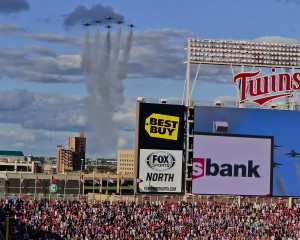

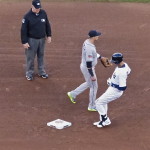
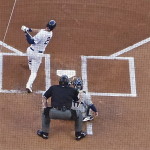
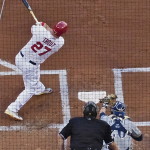
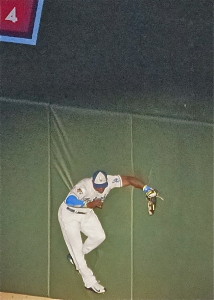
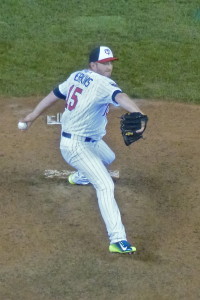
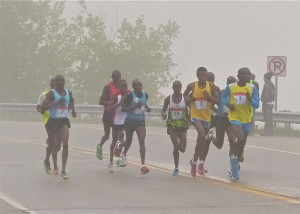
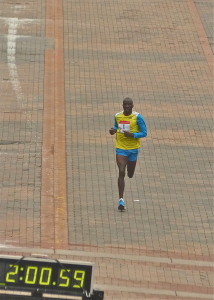
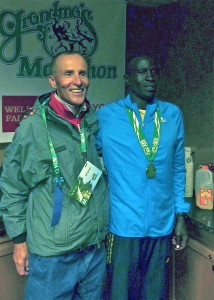
 John Gilbert is a lifetime Minnesotan and career journalist, specializing in cars and sports during and since spending 30 years at the Minneapolis Tribune, now the Star Tribune. More recently, he has continued translating the high-tech world of autos and sharing his passionate insights as a freelance writer/photographer/broadcaster. A member of the prestigious North American Car and Truck of the Year jury since 1993. John can be heard Monday-Friday from 9-11am on 610 KDAL(www.kdal610.com) on the "John Gilbert Show," and writes a column in the Duluth Reader.
John Gilbert is a lifetime Minnesotan and career journalist, specializing in cars and sports during and since spending 30 years at the Minneapolis Tribune, now the Star Tribune. More recently, he has continued translating the high-tech world of autos and sharing his passionate insights as a freelance writer/photographer/broadcaster. A member of the prestigious North American Car and Truck of the Year jury since 1993. John can be heard Monday-Friday from 9-11am on 610 KDAL(www.kdal610.com) on the "John Gilbert Show," and writes a column in the Duluth Reader.